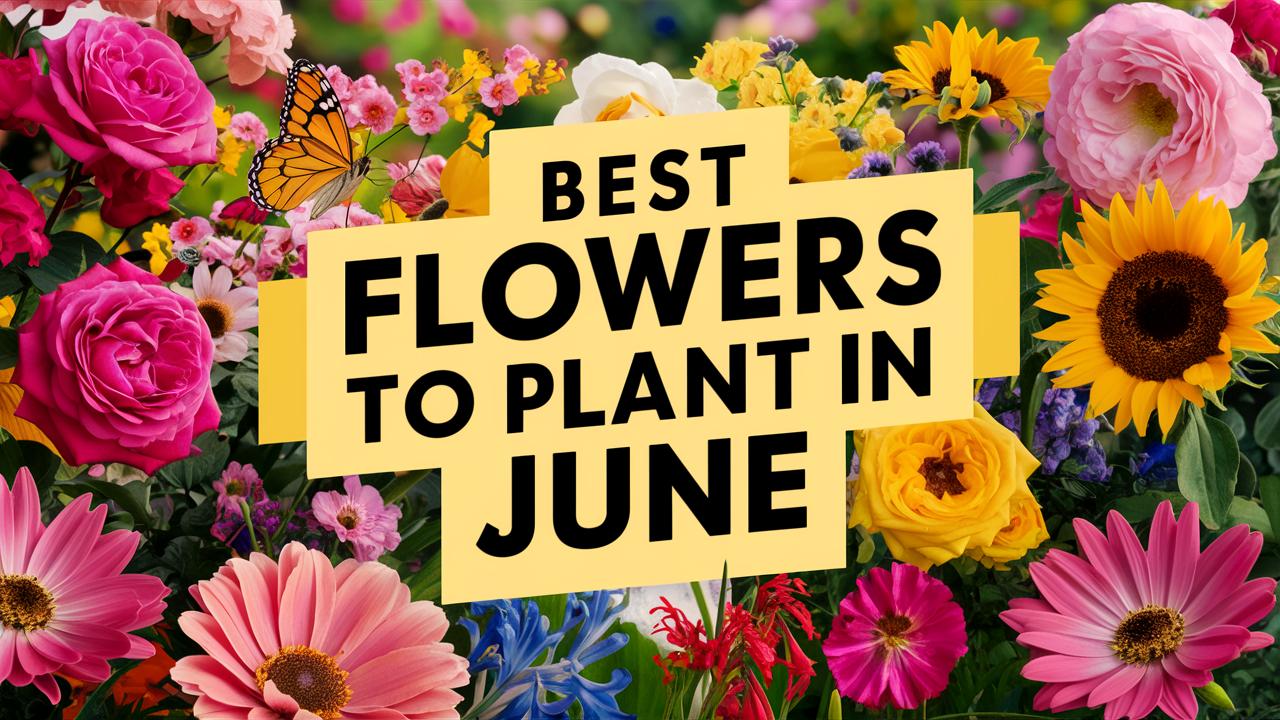In this guide, we’ll explore the best flowers to plant in June, offering details on each flower’s characteristics, ideal growing conditions, and tips to ensure your garden flourishes.
Gaillardia
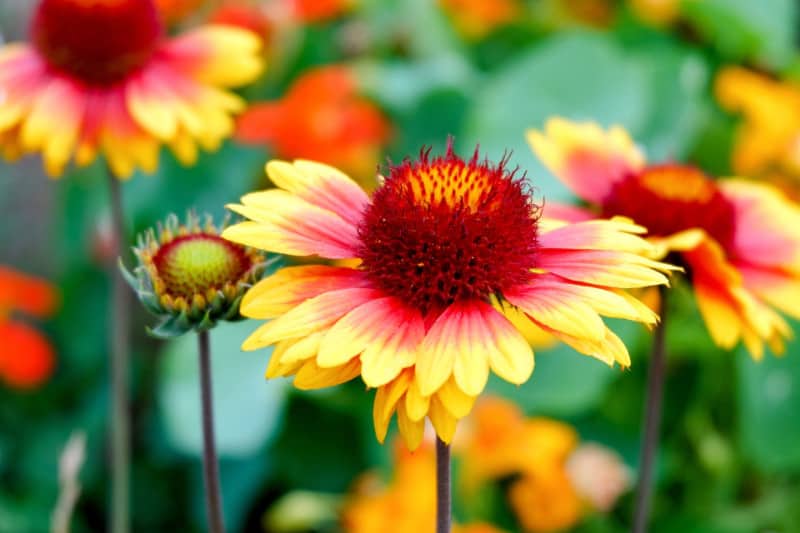
Also known as the blanket flower, Gaillardia is a vibrant perennial that can easily brighten any garden. These flowers are characterized by their fiery red and yellow color combinations, resembling a sunset. Gaillardia thrives in full sun and well-drained soil, making them an excellent choice for drought-tolerant gardens. Planting them in June allows for immediate bloom action, as they typically flower from mid-summer through fall.
To care for Gaillardia, water them moderately but avoid waterlogging, as they prefer somewhat dry conditions. Deadheading spent blooms encourages more prolific flowering. Plus, they are attractive to pollinators like bees and butterflies, encouraging biodiversity in your garden.
Butterfly Milkweed

As its name suggests, Butterfly Milkweed (Asclepias tuberosa) is a vital plant for attracting lovely butterflies, especially monarchs. This perennial boasts attractive clusters of bright orange and yellow flowers that bloom from mid-summer into fall. Butterfly Milkweed thrives in well-drained soil and full sun, making June a perfect time to plant it.
This flower’s deep taproot allows it to tolerate periods of drought, but it will appreciate periodic watering during extremes. Another distinct advantage is its resistance to deer and rabbits, as they tend to avoid this plant. Planting Butterfly Milkweed nurtures an important ecosystem, as it serves as a host plant for the caterpillars of several butterfly species.
Pentas
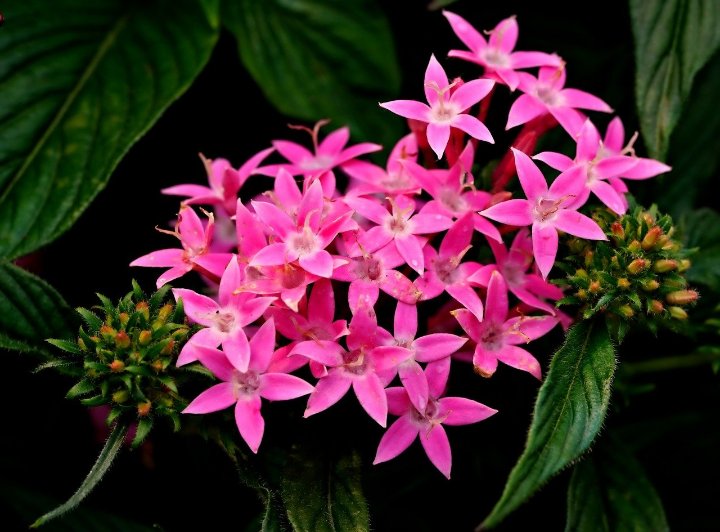
Pentas, often called star flowers, are a wonderful choice for gardeners looking for continuous flowering throughout the summer. Known for their star-shaped blooms that come in a range of colors—red, pink, white, and purple—Pentas thrive in warmer climates and are particularly well-suited for planting in June.
These flowers enjoy full sun but can tolerate partial shade, making them versatile for various garden locations. Keeping the soil consistently moist will help Pentas flourish. They are also renowned for attracting butterflies and hummingbirds, so planting these in your garden will not only add color but also life.
Daylily
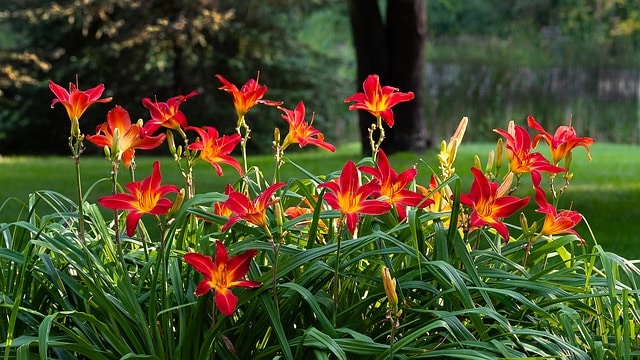
Daylilies are perennials that offer a wide variety of beautiful blooms with incredibly low maintenance. Planting daylilies in June will guarantee you a long period of colorful flowers. Each blossom lasts only one day, but the plant will produce many flowers throughout the season thanks to its numerous buds.
These adaptable plants thrive in a variety of soil types and conditions, although they do prefer sunny spots. They require minimal watering once established and are resistant to many pests and diseases. Consider mixing different varieties for a staggered blooming effect, ensuring a vibrant display of colors throughout the late spring and summer.
Begonia
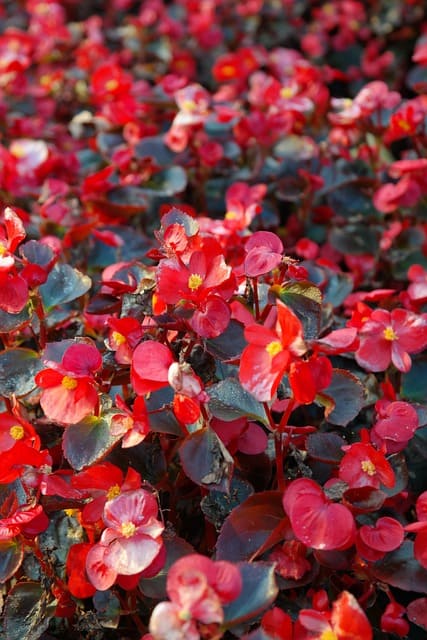
For those wanting to add tropical flair to their outdoor spaces, begonias are a fantastic option, especially in shaded areas. June is an ideal time for planting these flowers, which come in a wide variety of colors and leaf patterns. With their lush foliage and unique blooms, begonias can add a splash of color even in partially shaded spots.
Most varieties of begonias prefer rich, well-draining soil and benefit from regular watering to prevent their soil from drying out. These beauties are not particularly frost-tolerant, so they’re best lifted before the first frost. They can also be grown indoors, bringing their charm into your home.
Sea Holly

Sea holly (Eryngium) is a unique and striking perennial that can enhance any garden with its spiky, thistle-like flowers, which come in shades of blue or purple. Planting this fascinating flower in June allows them to establish well before the heat peaks. Sea holly thrives in dry, well-drained soils and full sun, matching perfectly with xeriscape gardens.
These flowers are drought-resistant once established, making them ideal for low-maintenance gardens. Sea holly is also a boon for pollinators, attracting bees and other beneficial insects. Their distinctive appearance adds texture and interest to both borders and wildflower gardens.
Verbena

Not only are verbenas stunning, but they are also hardy and versatile. Available in both trailing and upright varieties, verbenas bring lush colors and long-lasting blooms to your June garden. They enjoy warm weather and well-drained soil, making them perfect for this time of year.
Watering regularly promotes better growth, but be careful not to overwater as this can lead to root rot. With their ability to attract bees and butterflies, planting verbenas not only beautifies your garden but also contributes to the local ecosystem. Their vibrant clusters of tiny flowers can create a carpet of colors, perfect for hanging baskets or borders.
Melampodium

Melampodium is often overlooked but is a charming annual that deserves some attention. Known for bright yellow daisy-like flowers, this plant thrives in June heat and offers continuous blooms throughout the summer. They prefer full sun and can handle poor soils, making them a low-maintenance option for busy gardeners.
Melampodium is an excellent choice for containers, beds, and borders, providing color and vibrancy. They are relatively pest-resistant and do well without much fuss, making them ideal for gardeners looking for simplicity without sacrificing beauty.
Angelonia
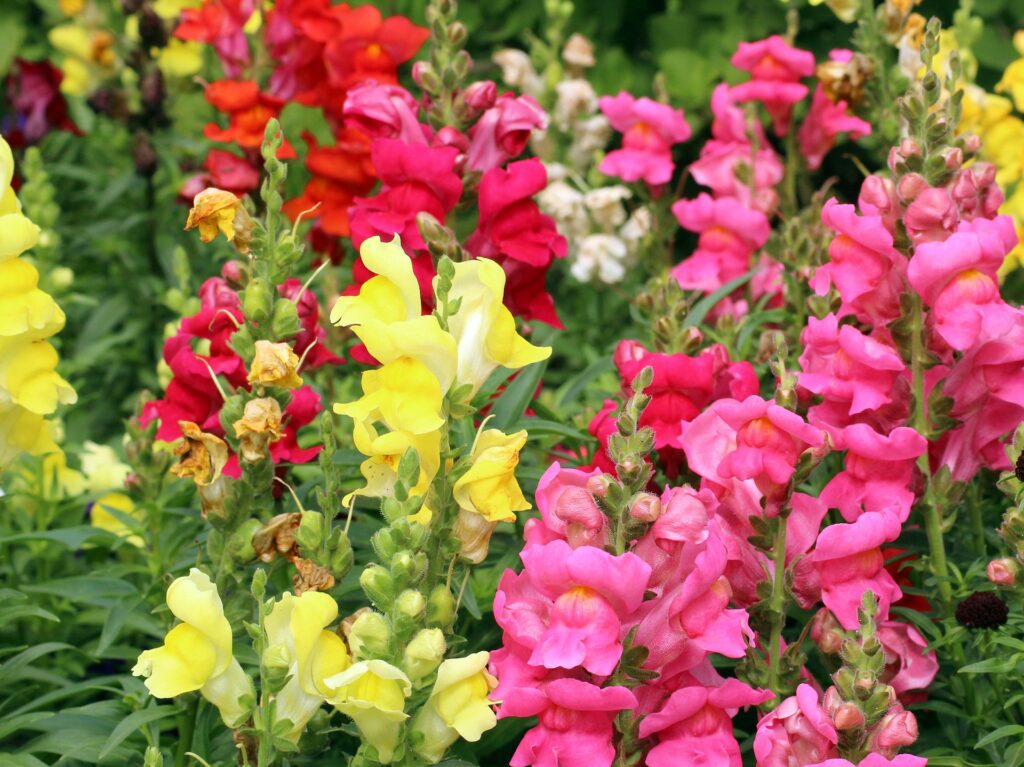
Angelonia, often referred to as summer snapdragon, is an appealing choice for gardens in June. This annual flower offers sturdy spikes of color in shades of blue, purple, white, and pink. They thrive in full sun and can tolerate hot, dry conditions, making them perfect for summer gardens.
Angelonia’s upright structure adds height and formality to flower beds, while their long-lasting blooms create a stunning display from summer into the fall. They are low maintenance, requiring moderate watering and ensuring that the soil drains well. Planting them in June will reward you with an eye-catching garden throughout the summer.
Gomphrena
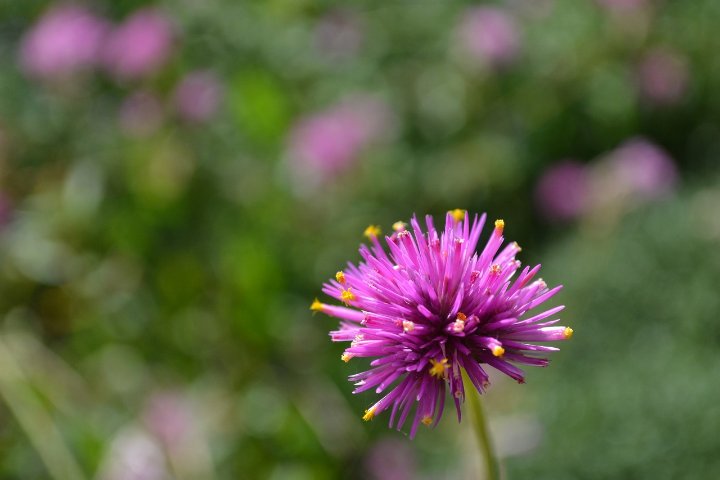
Gomphrena, commonly known as globe amaranth, is a delightful flower that boasts puffy, globe-shaped blooms in vibrant shades of purple, pink, and white. Planting Gomphrena in June allows them to establish before the heat intensifies, resulting in robust plants that bloom profusely throughout the summer.
These hardy annuals require full sun and can thrive in less-than-ideal soil conditions. They are drought-tolerant once established, making them a smart choice for low-water gardens. Gomphrena also performs well as a cut flower, adding a charming touch to bouquets.
Canna
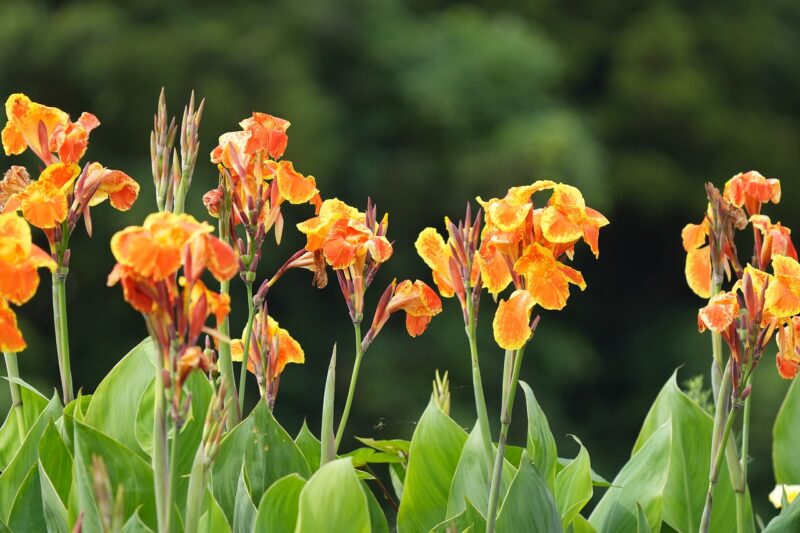
Canna lilies are bold and tropical, known for their dramatic foliage and vibrant flowers. When planted in June, they provide a stunning show of color throughout the summer. Cannas thrive in full sun and prefer rich, consistently moist soil, mimicking their natural tropical habitat.
These plants can grow quite tall, making them ideal for creating a focal point in any garden or corner. Once the blooms fade, leave the seed pods in place for added interest, or cut them back to promote new growth. Cannas not only amplify your garden’s aesthetics but also invite butterflies and hummingbirds to visit.
Balloon Flower
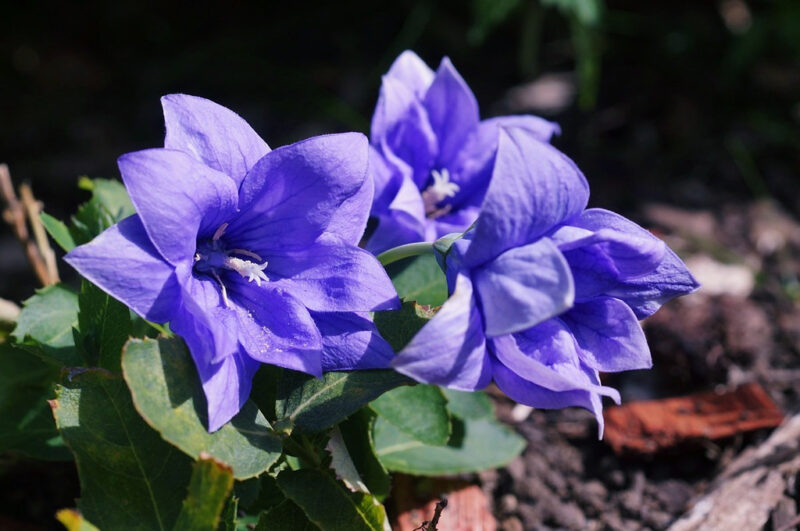
Balloon flowers, or Platycodon, are named for their unique balloon-like buds that burst open into beautiful star-shaped flowers. June is a fantastic time to plant these perennials, as they benefit from a longer growing season. They thrive in full sun to partial shade and prefer well-drained soil.
This perennial is relatively low-maintenance, requiring moderate watering. Balloon flowers can also attract local pollinators, enhancing your garden’s ecological value. Their unique shape and vibrant colors add a fun touch, making them a conversation starter in any flower bed.
Helenium
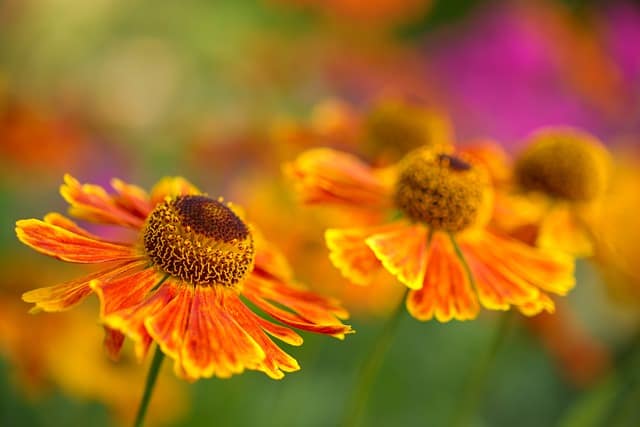
Helenium, also known as sneezeweed, brings cheerful hues of yellows, oranges, and reds to the summer garden. Planting this perennial in June allows them to establish roots before entering their prime blooming phase in late summer. Heleniums thrive in full sun and prefer moist, well-drained soils.
These vibrant flowers attract butterflies and other pollinators, making them an ideal choice for ecologically-minded gardeners. They also provide excellent cut flowers for arrangements and boast excellent drought tolerance once established.
Impatiens
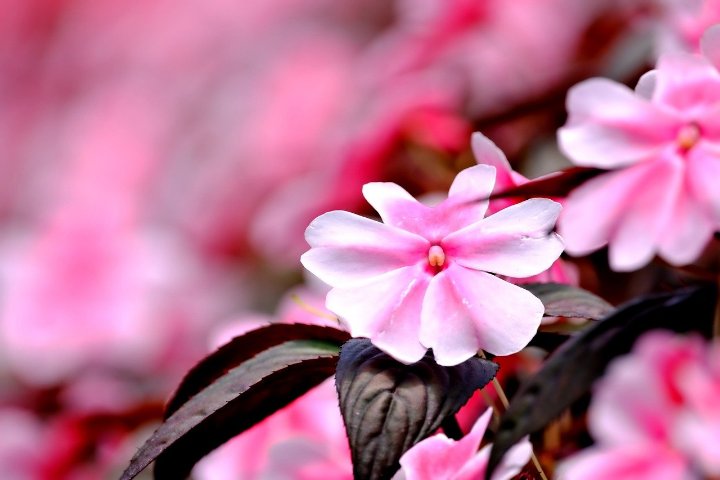
Impatiens are a classic choice for shaded areas in your garden, providing a colorful touch when other flowers may struggle. Known for their vibrant blossoms in every color imaginable, these annuals can be planted throughout June without worry of frost.
Impatiens prefer moist, well-drained soil and can benefit from a bit of afternoon shade on particularly hot days. Regular watering helps maintain healthy blooms, and these flowers provide plenty of continuous color throughout the summer season.
Sedum
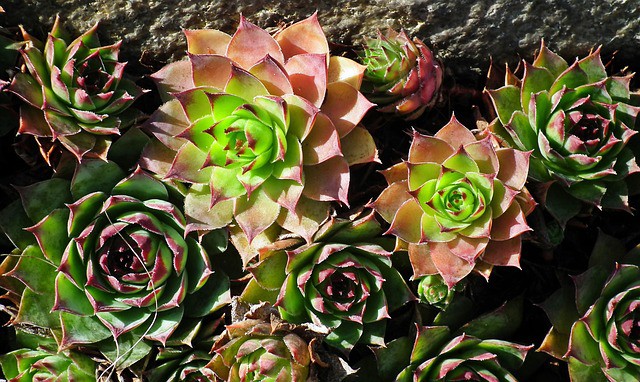
Sedum, commonly known as stonecrop, is a hardy succulent that comes in a variety of shapes and colors. June is a perfect time to plant sedum, as warm conditions promote rapid growth. Sedum thrives best in well-drained soil and full sun, making it an ideal choice for low-water gardens or rockeries.
These plants are not only beautiful, but they also work well in diverse garden settings, from borders to containers. Sedum offers resilience against drought and pests, making them perfect for gardeners looking for low-maintenance options. Their fleshy leaves and unique growth habits create visual interest all summer long.
Globe Thistle
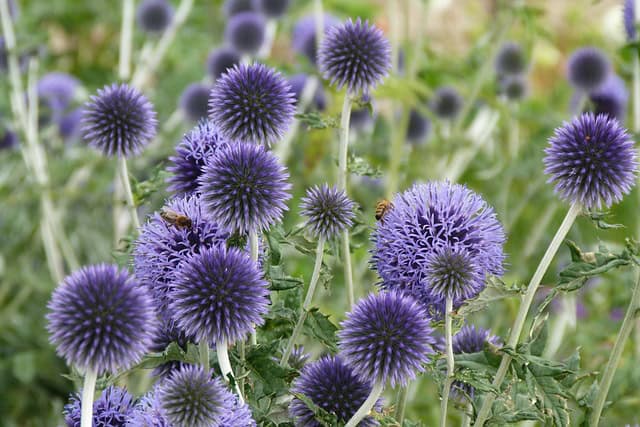
Globe thistles are known for their striking, spherical blooms covered in vibrant blue to purple florets. Planting these in June allows for ample time for them to establish before they gracefully erupt into bloom during late summer. These perennials thrive in full sun and well-drained soils, making them suitable for almost any garden setting.
Globe thistles are not only admired for their beauty but also for their ability to attract bees and butterflies, making them an excellent choice for pollinator gardens. Once flowered, their seed heads also provide texture and interest throughout the fall months.
Lilies

Lilies are timeless, captivating flowers that add elegance to any garden. With various species and hybrids, lilies offer a stunning array of colors, patterns, and fragrances. Planting in June can be ideal for those in warmer climates, as it gives bulbs a kickstart into the growing season before they bloom in mid to late summer.
Lilies prefer reasonably fertile, well-draining soil, and they thrive with plenty of sunlight. Care involves regular watering without allowing the soil to become overly saturated. After their blooming period, cut back their stems to encourage healthy growth for the following year.
Caladiums
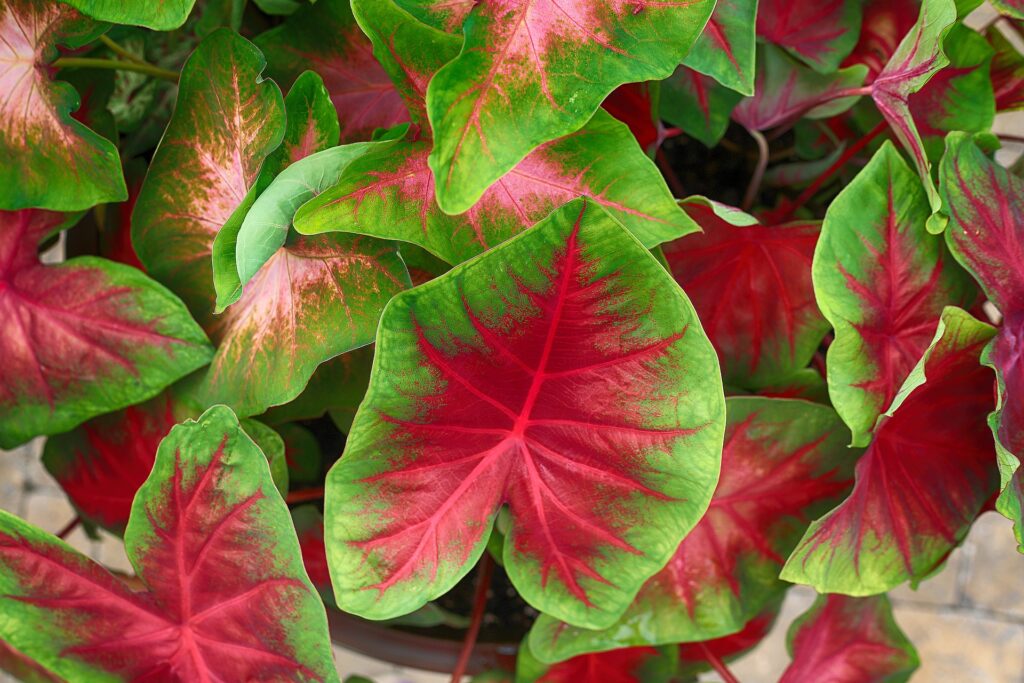
Caladiums are renowned for their stunning foliage rather than their flowers. Known for their heart-shaped leaves, they come in colors ranging from bold reds and pinks to soft whites and greens. Planting in June, especially in a warm climate, allows these tropical plants to thrive and showcase their vibrant hues throughout the summer.
Preferring partial to full shade, caladiums are perfect for low-light areas in gardens or patios. They enjoy consistent moisture, making regular watering essential to maintain their spectacular appearance. Not only do caladiums enhance the beauty of your garden, but they also add an exotic touch.
Geraniums
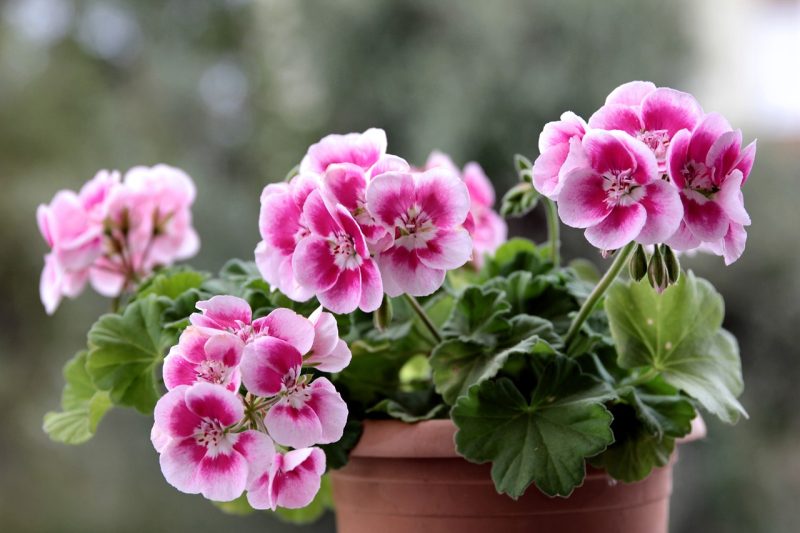
Geraniums are a well-loved flower, offering practical versatility and a burst of color. These annuals can be easily planted in June to provide blooms throughout the summer. They thrive in full sun and well-drained soil, making them popular for both flower beds and container gardening.
With a variety of colors and varieties available, geraniums can fit any garden style. They are also relatively pest-resistant and require very little maintenance once established. Regular deadheading encourages more blooms, giving you a long-lasting show.
Torenia
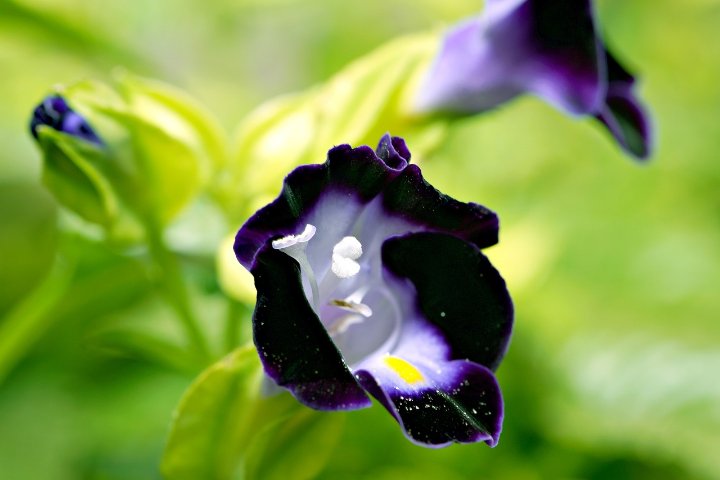
Torenia, also known as wishbone flower, is a charming annual that thrives in shade and partial shade areas, making it an excellent choice for planting in June. Its unique, tubular flowers usually come in shades of purple, blue, yellow, or white, providing an attractive display in shaded areas and containers.
Torenia prefers moist, well-draining soil and regular watering, which helps them bloom prolifically through the summer months. Their lush foliage and cascading growth habit make them perfect for hanging baskets or as a backdrop in shaded flower beds.


